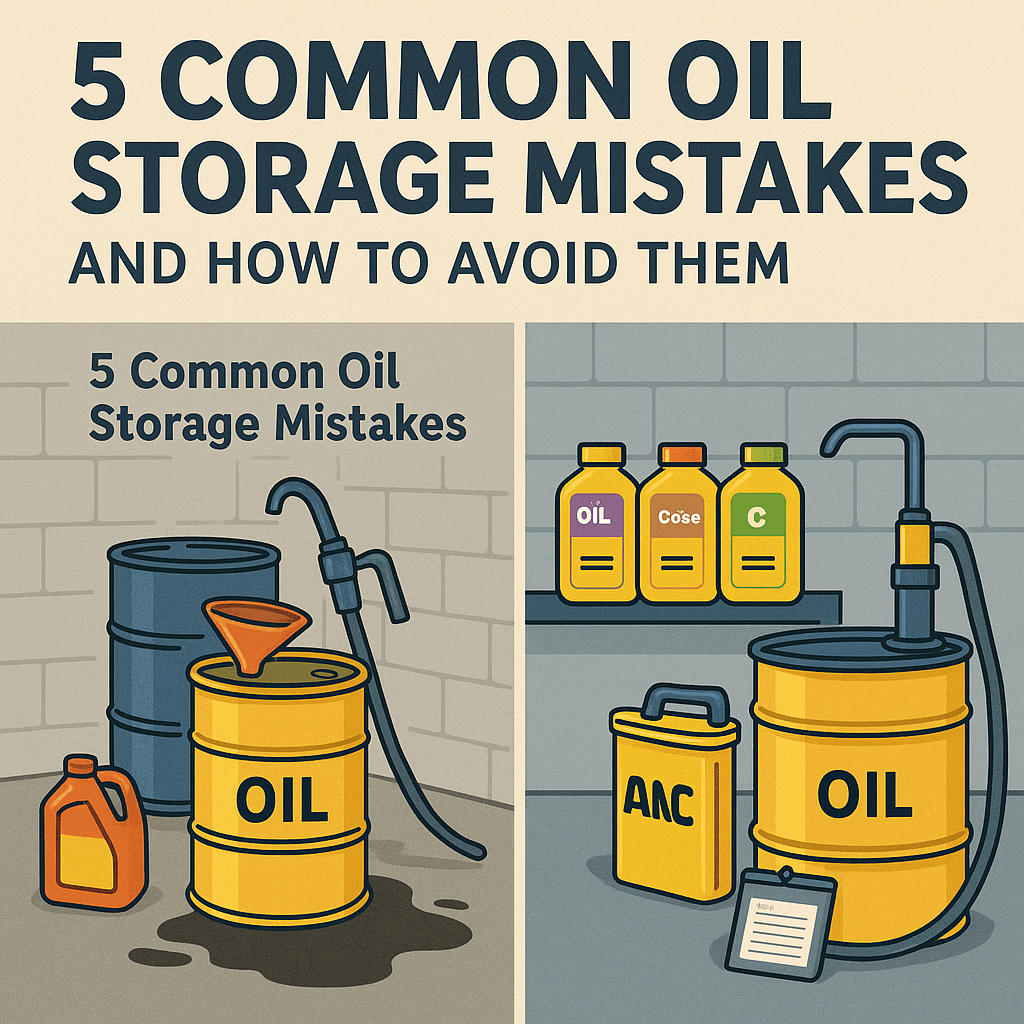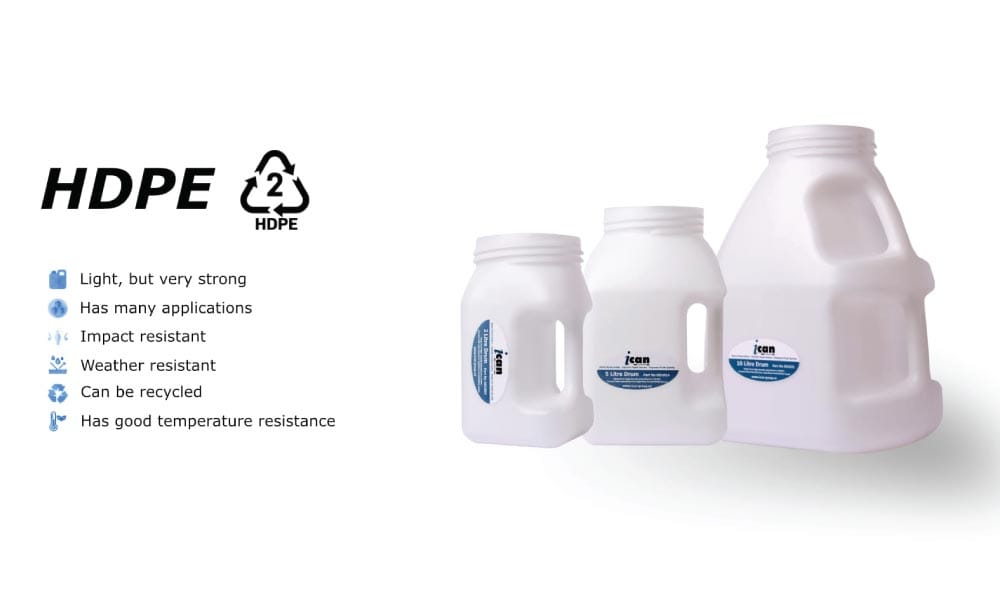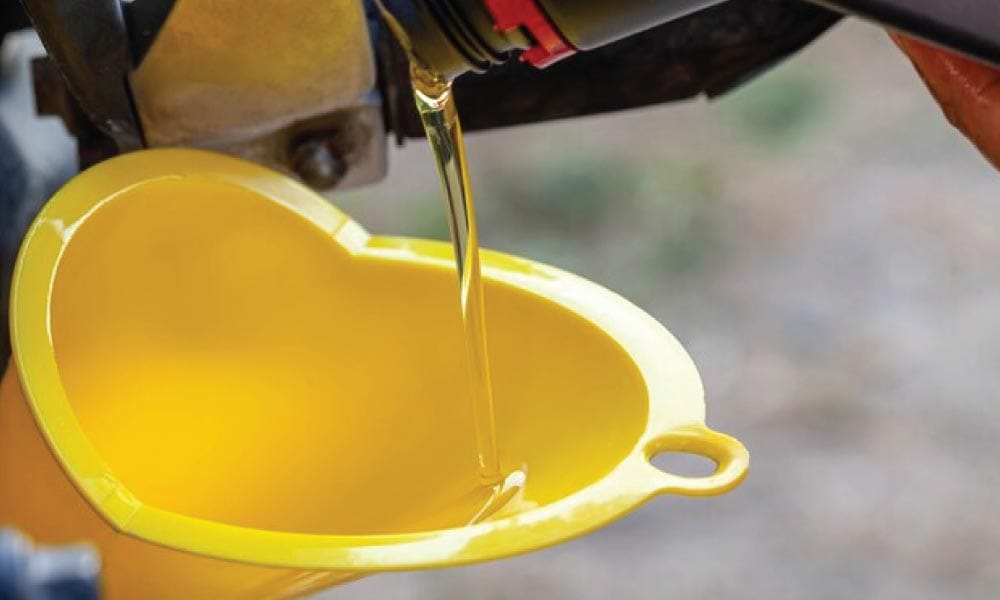Poor oil storage and handling practices often lead to hidden costs in industrial operations. Contaminated oil, improper transfer methods, and lack of clear labeling can cause equipment failure, production downtime, and higher maintenance expenses.
The good news? These risks are entirely avoidable.
In this article, we’ll break down the five most common oil storage mistakes, and introduce how iCan Fluid Transfer System provides smart, reliable solutions for better lubrication management.
Top 5 Mistakes in Oil Storage
- Storing Oil in Open or Poorly Sealed Containers
Leaving oil in open containers or those without tight sealing allows dust, moisture, and other contaminants to enter. This leads to oil degradation and significantly increases the risk of machinery failure due to contaminated lubricants.
- Not Following FIFO (First In, First Out) Principles
Failing to use the oldest oil first may result in expired or deteriorated oil being used in equipment. This inconsistency can cause lubrication inefficiencies and accelerate machine wear.
- Mixing Different Types of Lubricants
Using different oils without proper compatibility checks can cause chemical reactions that harm the oil’s performance and lead to internal damage in machinery.
- Exposing Oil to Uncontrolled Temperatures
Storing lubricants in areas with high heat or fluctuating temperatures—especially outdoors—can degrade the quality of the oil. High heat speeds up oxidation and reduces the oil’s protective properties.
- Transferring Oil with Unclean or Generic Tools
Many operations use funnels, jugs, or outdated tools to transfer oil. These tools often harbor dirt or residues from previous use, introducing contaminants into clean oil during transfer.
Smart Solutions from iCan Fluid Transfer System
At iCan Fluid Transfer System, we’ve developed a complete system to simplify and secure every step of lubrication handling—from storage to transfer and labeling. Here’s how:
- iCan Oil Containers
Our high-density polyethylene (HDPE) containers are purpose-built for industrial lubrication.
- Saves space on storage shelves and allows for safer stacking and handling.
- Prevents moisture and dust ingress, protecting lubricant integrity.
- Built tough for harsh work environments.
- iCan Piston Pump
Designed for long-distance oil transfer with precision and safety, the iCan Piston Pump includes:
- 5-meter long hose for flexible reach and remote dispensing.
- Smooth, controlled pumping action to reduce user fatigue.
- Secure connections to minimize spillage and contamination.
- iTag & iBand: Color-Coded Lubricant Identification
Proper labeling prevents mix-ups and increases technician accuracy.
- Enhances clarity and consistency during maintenance.
- Simplifies lubricant selection and prevents human error.
- Makes technician training faster and more standardized.
- iPouch; FIFO & Lubricant Tracking
The iPouch system helps enforce FIFO policies and organizes important information
- Easily track fill or expiry dates for better oil rotation.
- Holds maintenance checklists or safety data sheets.
- Resists wear and weather exposure in rugged environments.
- iCan Lids
iCan’s Pour and Pump Lids are engineered for clean and easy oil application.
- Transfers oil without exposing it to contaminants.
- Prevents spills and workplace mess.
- Snaps securely onto all iCan containers.
Why It Matters?
Reliable oil storage and handling aren’t just about cleanliness—they’re about performance, efficiency, and equipment life span. The iCan Fluid Transfer System provides a professional-grade, user-friendly solution that tackles the common pain points in industrial lubrication management.
By investing in proper tools and systems like iCan Transfer Fluid System, your business can:
- Reduce equipment failure rates
- Improve maintenance workflow
- Minimize product waste
- Increase safety for technicians
- Standardize lubrication practices across teams
Want to upgrade your lubrication system?
Learn more about the complete iCan Fluid Transfer System lineup at: Click Here




